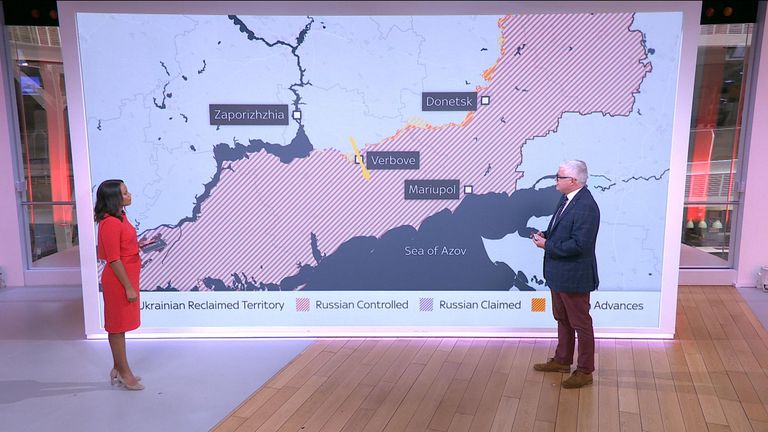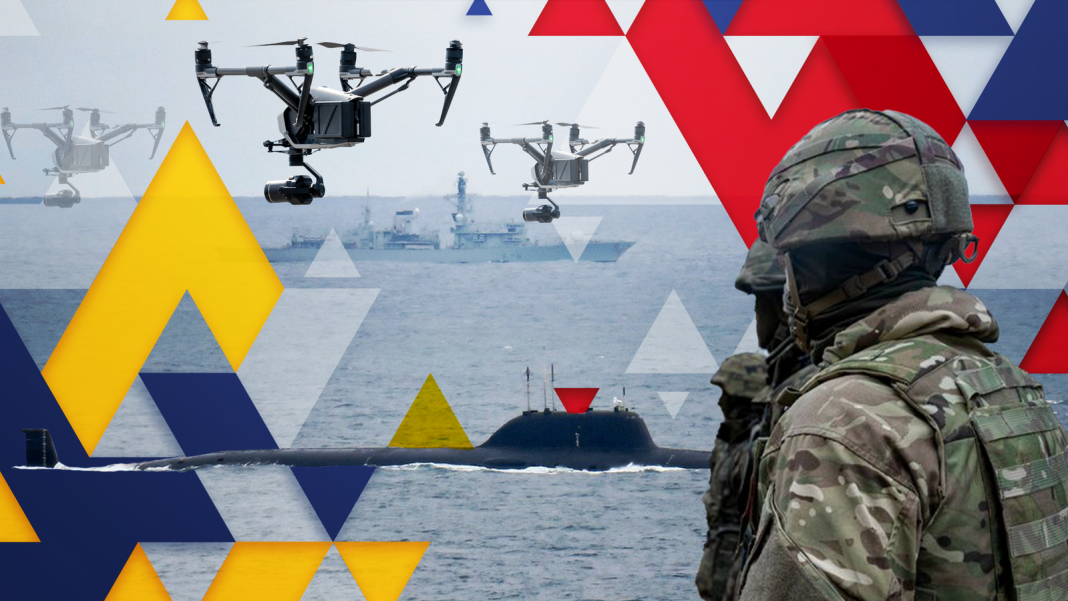Russia’s naval military might dwarf that of Ukraine, yet the Black Sea Fleet (BSF) continues to be targeted – and increasingly effectively – by Ukrainian forces.
Conventional military wisdom suggests the largest, best equipped military will prevail, yet Ukraine appears to have turned that principle on its head.
Why is Ukraine attacking the Russian Navy, and does this strategy expose a critical vulnerability for many of the world’s naval powers?
Following Russia’s illegal annexation of Crimea in 2014, Ukraine recognised its Sevastopol-based navy could not match Russia’s BSF militarily, so those ships that could not escape – around 75% of the Ukrainian Navy – were captured by Russia, and the Ukrainian flagship Hetman Sahaidachny was scuttled to prevent it falling into Russian hands.
Turkey controls the Bosphorus Straights and denies the passage of any military vessels during the conflict, enabling the BSF to blockade the Black Sea and dominate Ukraine’s territorial waters.
However, a core principle of war is to avoid your enemy’s strength and attack their weakness, particularly if your enemy is superior in size and capability.
Please use Chrome browser for a more accessible video player
3:03
Ukraine: Black Sea fleet chief killed
Ukraine has therefore leveraged technology to conduct a series of “asymmetric” attacks against the Russian BSF, including sinking the Moskva, targeting numerous ships and submarines with a mix of drones and missiles, and this past week, an audacious attack on the “brains” of the BSF – its military HQ.
Ukraine, a nation with no military ships, has forced a superpower’s navy into retreat.
But why?
Russia’s blockade of the Black Sea has halted Ukraine’s grain exports – a vital source of revenue – and limits Russia’s ability to launch an amphibious assault of the Ukraine port of Odesa.
By successfully targeting Russia’s naval capability – particularly its ships and submarines – it is making these traditional symbols of military supremacy into a critical Russian vulnerability, forcing the BSF to seek sanctuary further east, away from Ukraine.
Please use Chrome browser for a more accessible video player

2:27
Kyiv claims major breakthrough
The success of Ukraine’s strategy has significant implications for Western military procurement.
Navy vessels – particularly large aircraft carriers – do not operate alone. A Carrier Group includes Cruisers, Destroyers or Frigates, Auxiliary support vessels and fast-attack submarines.
This represents powerful military capability, especially at scale, but when nations can only afford very limited numbers of these strategic assets, they cannot afford to be lost, and are thus very vulnerable to asymmetric attack.
And, with the Queen Elizabeth-class carriers costing more than £3bn each, they make an attractive target for an agile and innovative foe.
Please use Chrome browser for a more accessible video player

0:55
Odesa drone explosion seen from ferry
Air forces are similarly vulnerable.
The US B2 is a uniquely capable aircraft, but at over $1bn each, only 20 were commissioned. At least those platforms have global reach and do not need to forward-deploy.
The Joint Strike Fighter will be sold in much larger numbers but at $100m each, national budgets will still limit numbers available.
Lessons will be learned elsewhere
And, although most military air bases (in Europe) have hardened aircraft shelters available to protect against drone/asymmetric attack, the current concept of operations is to forward-deploy, when these strategic assets will be increasingly vulnerable to an agile and innovative enemy.
This content is provided by Spreaker, which may be using cookies and other technologies.
To show you this content, we need your permission to use cookies.
You can use the buttons below to amend your preferences to enable Spreaker cookies or to allow those cookies just once.
You can change your settings at any time via the Privacy Options.
Unfortunately we have been unable to verify if you have consented to Spreaker cookies.
To view this content you can use the button below to allow Spreaker cookies for this session only.
Click to subscribe to Ukraine War Diaries wherever you get your podcasts
Ukraine has no navy, yet it has terrorised the Russian BSF, destroyed many of its strategic assets and destroyed its HQ, and forced Russia into retreating from the main battlefield.
Technology, innovation and determination have prevailed over conventional military capability. Instead of “biggest is the best”, the underdog can prevail.
Read more:
Survivors reveal dark cruelty of Russia’s detention centres
Why is Ukraine so successful in attacking key Russian military facilities?
Please use Chrome browser for a more accessible video player

0:47
Ukraine retakes village near Bakhmut
Taiwan might not be able to match China militarily, but it will have learned valuable lessons from the Ukraine war.
However, so will North Korea, Iran, and a collection of nations that have traditionally been considered military “underdogs”.
Will the West’s military obsession with size and capability prove to be its critical vulnerability?
Although military numerical and capability supremacy remains an attractive option, Ukraine has demonstrated that agility, technology and adaptability can prove a compelling counter.
Which will not have passed unnoticed by potential adversaries!







